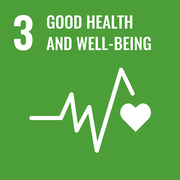
COVID-19: the 'perfect storm' that increases the risk of thrombosis discovered
In COVID-19 patients, one of the main causes of mortality is the high risk of thrombosis, which can occur either in the venous district in the form of deep vein thrombosis or pulmonary embolism or in the arterial district in the form of myocardial infarction or stroke. Approximately 20% of COVID-19 patients may experience these serious complications during hospitalisation.
Unfortunately, the available evidence to date has not clearly identified COVID-19 patients at risk of thrombosis or the indications for anticoagulant therapy to prevent thromboembolic risk.
The research group coordinated by Francesco Violi of the Department of Internal Medicine and Medical Specialities at Sapienza University of Rome, in collaboration with Lorenzo Loffredo, Pasquale Pignatelli and Annarita Vestri of the same university, has carried out two studies identifying which patients are at greater risk of thrombosis and which are the ideal doses of anticoagulant therapy to prevent thrombotic events. One of the two studies has been published in the journal Thrombosis and Haemostasis, and the other is forthcoming in Haematologica.
In particular, the first work consisted of a multicentre study including 674 COVID-19 patients, in which the combination of three simple variables such as age, serum albumin and levels of D-dimer, one of the protein fragments of fibrin responsible for the formation of clots (thrombi) in blood vessels, made it possible to identify patients at increased risk of thrombosis.
It was seen that those with a combination of high age (over 70 years), low albumin (<35 g/L) and high D-dimer (>2000ng/ml) were more likely to have thrombosis compared to younger patients with normal albumin and D-dimer values.
"By having this simple score, called the ADA score," says Francesco Violi, "it is now possible to determine who is at increased risk of thrombosis and who needs anticoagulant treatment."
The second paper, to be published in Haematologica, the official journal of the European Society of Haematology, addresses an issue that is still being debated two years after the start of the pandemic, namely whether the prevention of these thrombotic events should be done with standard anticoagulant therapy or with prophylactic doses, i.e. low doses of anticoagulants. This is important because low doses of anticoagulants, which are still the most widely used therapy, may be insufficient to reduce the risk of thrombosis.
The research team carried out a meta-analysis of studies comparing the two types of treatment, showing that standard doses of anticoagulants were superior to prophylactic doses in reducing thrombotic events without increasing the risk of serious bleeding.
"The meta-analysis, which included about 4500 COVID-19 patients," Violi concludes, "shows how this therapy would be a useful support not only in reducing thrombotic events, but also mortality, which, unfortunately, still remains high among these subjects."
References:
The ADA (Age-D-Dimer-Albumin) score to predict thrombosis in SARS-CoV-2 - Francesco Violi, Pasquale Pignatelli, Annarita Vestri, Alessandra Spagnoli, Francesco Cipollone, Giancarlo Ceccarelli, Alessandra Oliva, Maria Amitrano, Matteo Pirro, Gloria Taliani, Roberto Cangemi, Miriam Lichtner, Francesco Pugliese, Marco Falcone, Mario Venditti, Claudio Maria Mastroianni, Lorenzo Loffredo - Thromb Haemost DOI: 10.1055/a-1788-7592
Full versus prophylactic-intermediate doses of anticoagulants in COVID-19: a meta-analysis - Lorenzo Loffredo, Augusto Di Castelnuovo, Giovanni Alfonso Chiariello, Pasquale Pignatelli and Francesco Violi - Haematologica
Further Information
Francesco Violi
Department of Internal Medicine and Medical Specialities
francesco.violi@uniroma1.it
